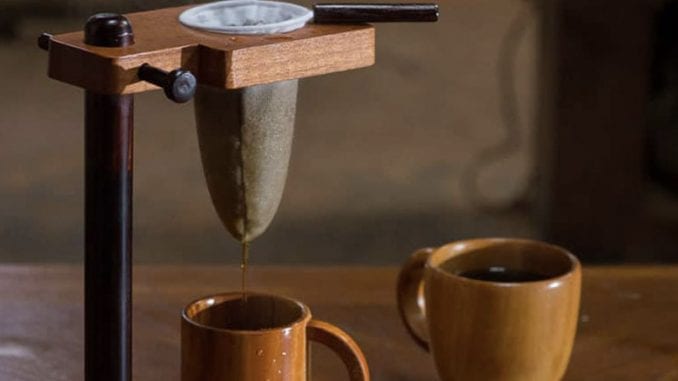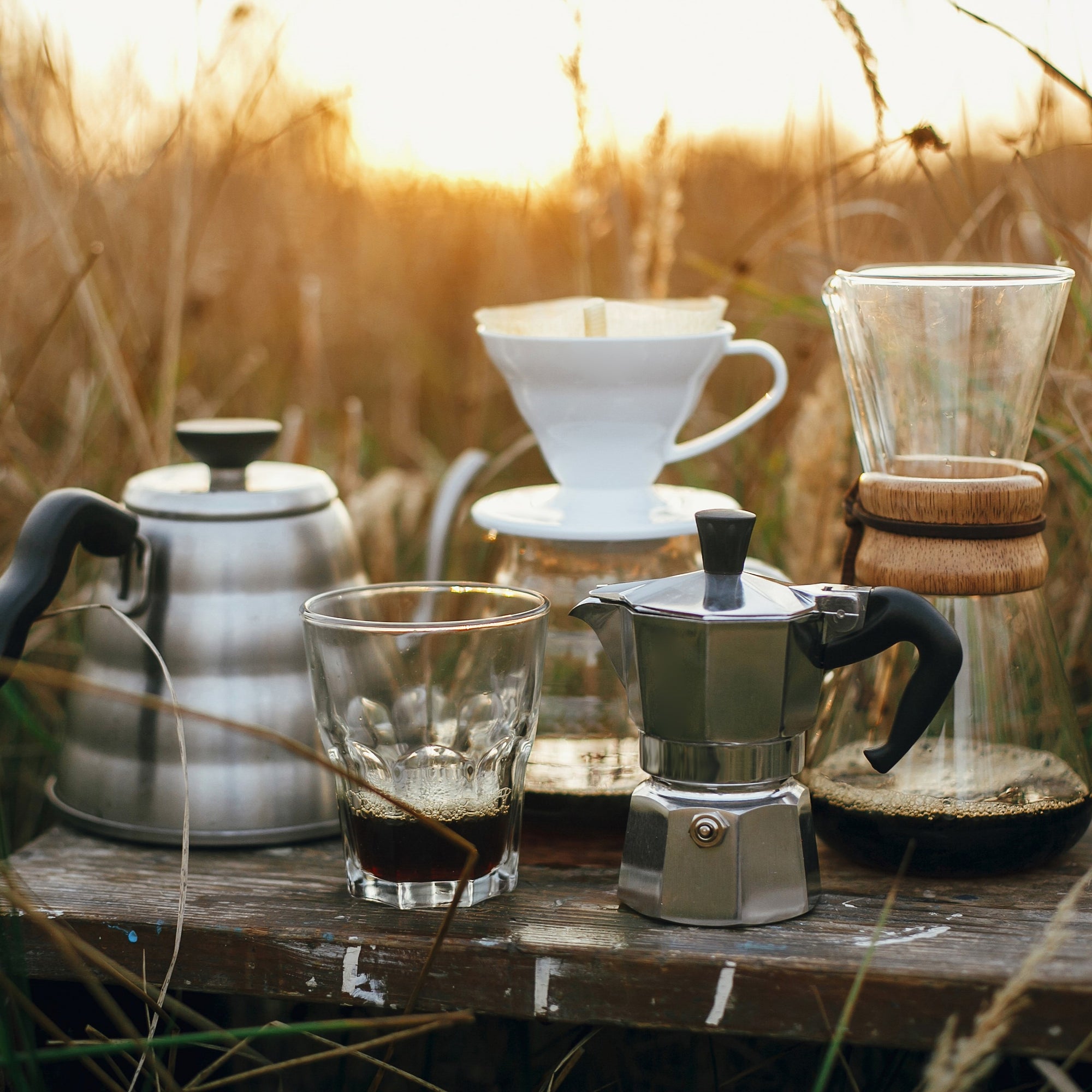Innovative Coffee Brewing Methods to Boost Your Early Morning Activity
Innovative Coffee Brewing Methods to Boost Your Early Morning Activity
Blog Article
The Scientific Research Behind Coffee Brewing: Just How Temperature Level and Time Affect Your Beverage
Comprehending the science behind coffee brewing exposes that temperature and time are not mere variables however crucial elements that determine the drink's flavor account and total high quality. The ideal developing temperature level typically falls between 195 ° F and 205 ° F, while the period of removal differs considerably throughout different techniques. This interplay of aspects can lead to a mug that is either disappointing or delightful. As we discover the subtleties of these components, the inquiry develops: how can one successfully equilibrium temperature and time to attain that best brew?
The Chemistry of Coffee Removal
The chemistry of coffee removal delves into the intricate processes that transform raw coffee beans into the fragrant beverage delighted in worldwide. This makeover largely includes the solubility of numerous compounds present in the beans, which are influenced by factors such as grind size, water top quality, and the developing approach employed.
During the developing procedure, warm water serves as a solvent, extracting soluble compounds, consisting of high levels of caffeine, lipids, sugars, and acids, from the coffee grounds. Each compound adds to the flavor account, scent, and body of the last beverage. For example, acids are accountable for appetizing and bright notes, while oils add to a rich mouthfeel.
The extraction procedure is not uniform; different compounds dissolve at different rates. The preliminary phases of brewing remove acids and sugars, bring about a positive acidity, while prolonged extraction can bring about anger as a result of over-extraction of undesirable substances. Comprehending these chemical interactions is critical for maximizing developing methods, as the equilibrium in between extraction time and water temperature level can substantially influence the total high quality of the coffee. Ultimately, mastering the chemistry of coffee extraction is key to accomplishing a tasty and all-round cup.
Ideal Brewing Temperatures
Finding the ideal developing temperature level is essential for unlocking the full possibility of coffee tastes and aromas - coffee brewing methods. Research indicates that the ideal variety for developing coffee lies in between 195 ° F to 205 ° F(90 ° C to 96 ° C) Within this variety, the removal procedure successfully dissolves the preferable soluble substances in coffee beans, causing a balanced and savory cup
Developing at reduced temperature levels, such as listed below 195 ° F(90 ° C ), might result in under-extraction, producing a weak and acidic mixture with low-key flavors. Conversely, developing at temperature levels going beyond 205 ° F(96 ° C) can cause over-extraction, creating a bitter and severe taste due to the extreme dissolution of unfavorable compounds, such as tannins.
Furthermore, the perfect brewing temperature level can vary relying on the coffee bean type and roast degree. Lighter roasts commonly profit from slightly greater temperatures to enhance their complex flavor accounts, while darker roasts may be much better fit to reduced temperatures to alleviate anger.
Eventually, keeping precision in brewing temperatures is important for achieving a harmonious equilibrium of flavors, guaranteeing that every mug of coffee provides a gratifying sensory experience.
Influence of Developing Time
Developing time plays a pivotal role in determining the flavor profile and overall high quality of coffee. The extraction process, which affects the preference, aroma, and body of the beverage, is mostly depending on how much time the coffee premises are in call with water. Shorter developing times can result in under-extraction, leading to a sour or weak taste, as not nearly enough soluble substances are liquified. Conversely, long term developing can cause over-extraction, where unwanted substances check out this site are launched, causing an astringent or bitter taste.
Optimal brewing time differs depending on the technique used and the work size of the coffee. A French press commonly needs about 4 minutes, while espresso removal is usually finished within 25 to 30 secs. It is vital to adjust brewing time in conjunction with other variables, such as water temperature level and coffee-to-water proportion, to accomplish the desired flavor account.
Recognizing the impact of developing time enables coffee enthusiasts to improve their brewing techniques, ultimately improving the sensory experience of their mug (coffee brewing methods). With mindful interest to this variable, one can open the complete potential of the coffee, disclosing its special attributes and nuances
Brewing Approaches and Their Impacts

As an example, approaches like French press and chilly brew enable for a much longer steeping time, causing a fuller body and durable taste because of enhanced removal of oils and soluble solids. Conversely, espresso developing utilizes high pressure and a shorter Visit Website removal time, generating a concentrated shot that emphasizes intense flavors and a rich crema.
Pour-over techniques, such as Chemex or V60, offer a more regulated extraction procedure, permitting the maker to control circulation rate and water circulation, which can improve brightness and quality. Meanwhile, percolation methods cycle water via the coffee grounds multiple times, resulting in a stronger, typically bitter flavor.
Lastly, the use of paper filters versus steel filters can likewise impact the last preference; paper filters generally yield a cleaner mug by capturing oils and great particles, while metal filters permit more oils to go through, adding to a fuller mouthfeel - coffee brewing methods. Comprehending these subtleties can elevate the coffee experience substantially
Tips for Perfecting Your Mixture
A well-executed brew can transform also the most basic coffee right into a remarkable experience. To achieve this, interest to detail is essential. Start with top quality, newly baked beans, as their flavor account diminishes over time. Grind the beans right before making to optimize freshness, making sure the work size matches your developing approach-- coarser for French press and finer for espresso.
Water quality plays a vital function; use filtered water without contaminations. The ideal brewing temperature level ranges in between 195 ° F and 205 ° F(90 ° C to 96 ° C ) Too hot can scorch the coffee, while as well trendy might under-extract flavors.
Timing is equally vital. For immersion methods, steeping for 3 to five minutes is ideal, whereas drip techniques generally take about five mins. Experiment with brew times to locate your favored toughness.

Conclusion
In recap, the elaborate relationship in between temperature level and time is critical in the coffee brewing process. Sticking to ideal developing temperature levels in between 195 ° F and 205 ° F, alongside specific timing tailored to each technique, ensures the desired flavor profile is attained. Recognizing these scientific principles equips people to refine their brewing methods, eventually causing a much more balanced and enjoyable coffee experience. Proficiency of these factors is crucial for any kind of coffee lover seeking excellence in their beverage.
Recognizing the scientific research behind coffee developing reveals that temperature and time are not mere variables but pivotal elements that dictate the drink's taste account and overall quality. Understanding these chemical communications is critical for enhancing brewing methods, as the equilibrium in between extraction time and water temperature level can substantially affect the overall quality of the coffee.Brewing time plays an essential function in identifying the flavor profile and general high quality of coffee. By concentrating on these elements-- bean high quality, grind size, water temperature, steeping time, and ratio-- you can boost your coffee developing process, resulting in a consistently exceptional mug.
In recap, the elaborate relationship between temperature level and time is critical in the coffee brewing process.
Report this page